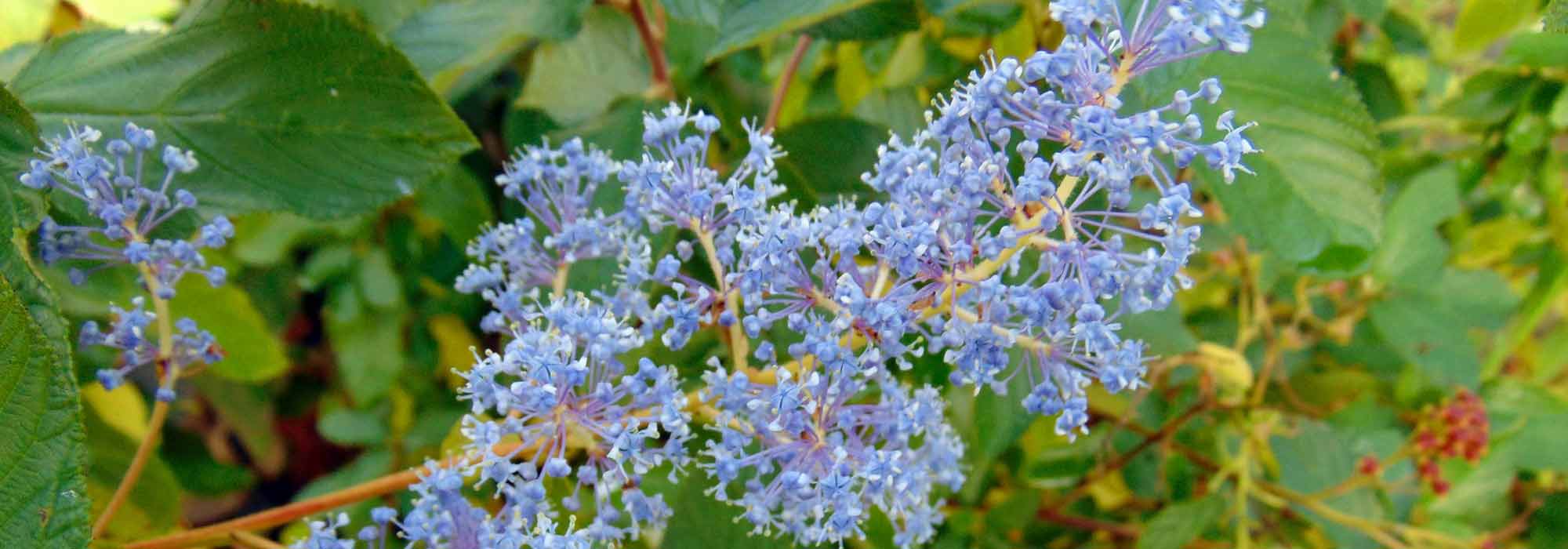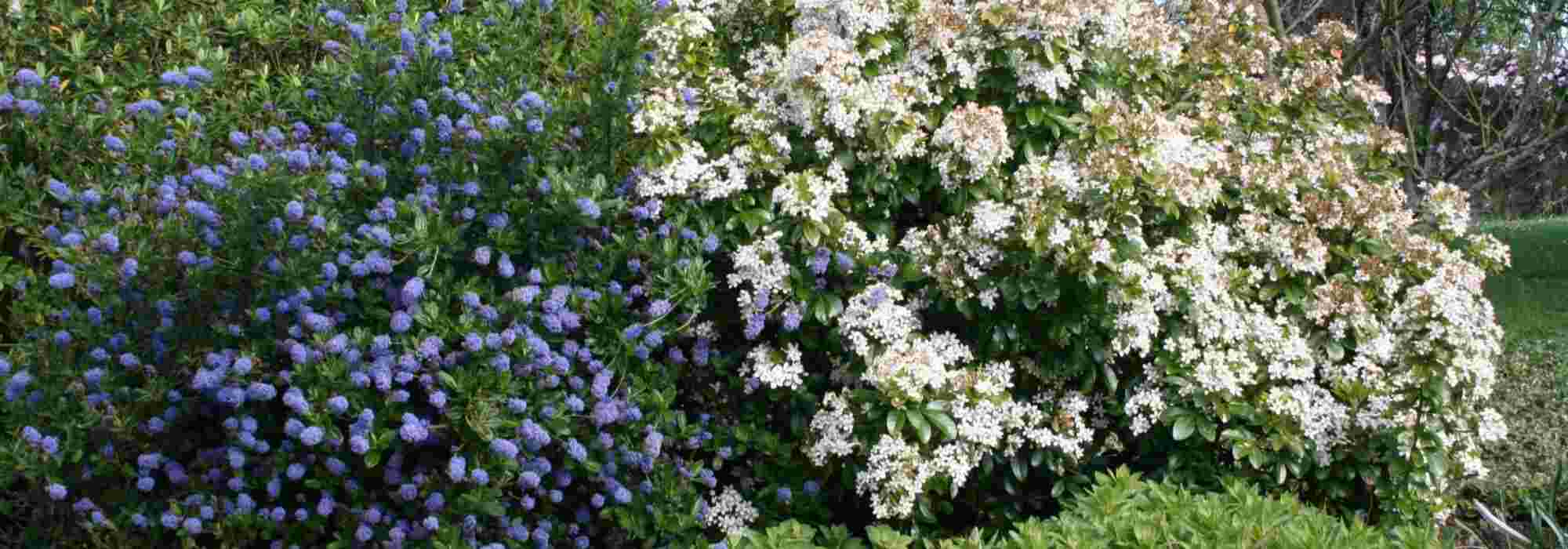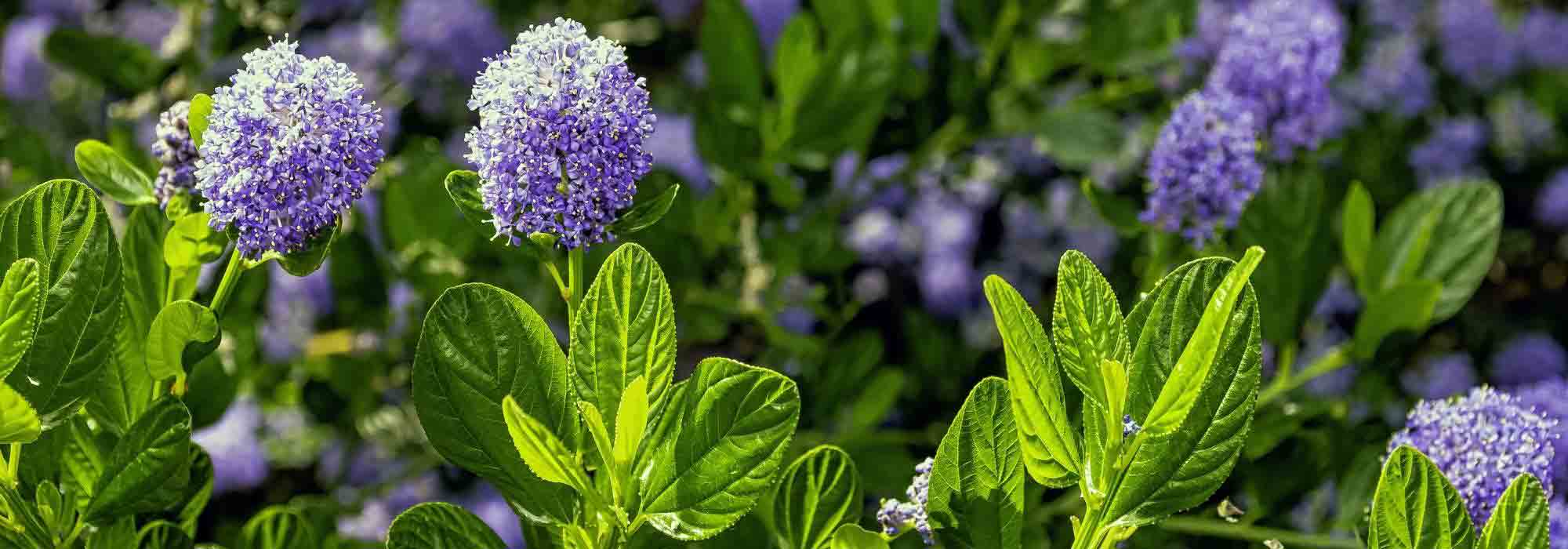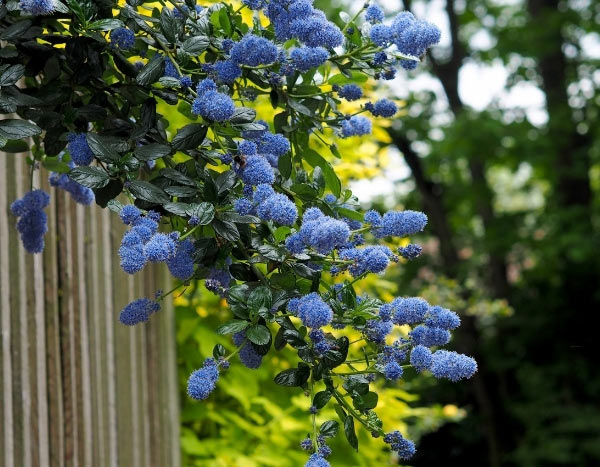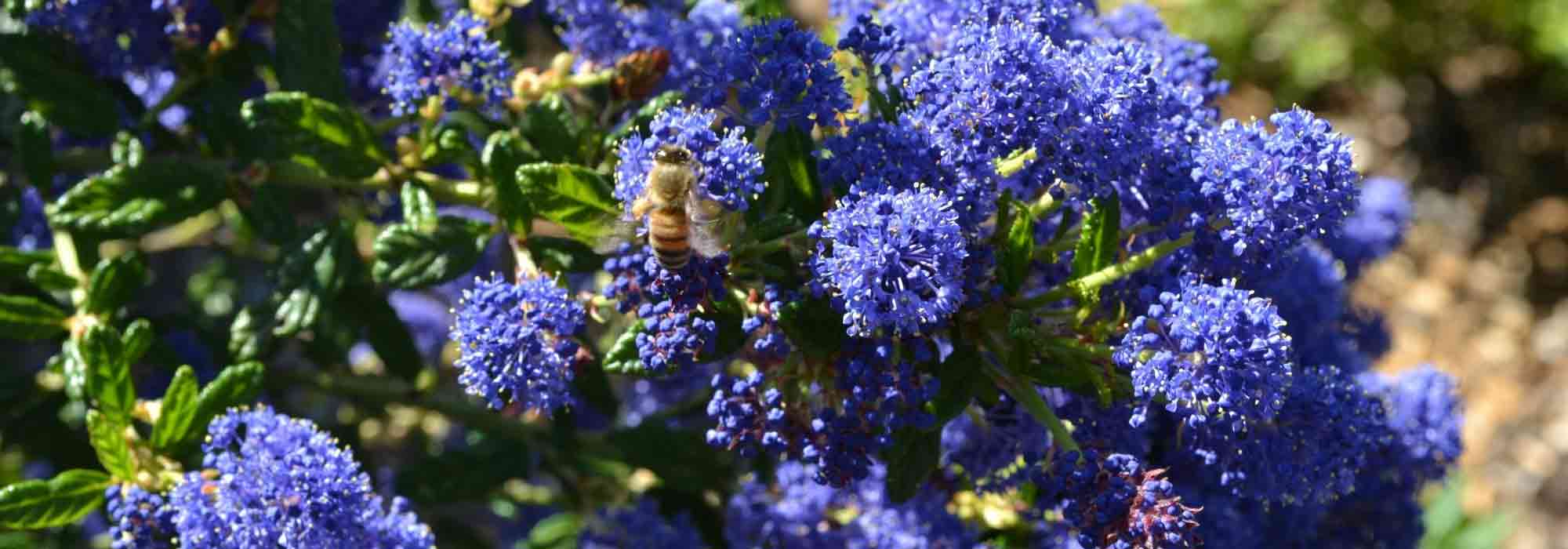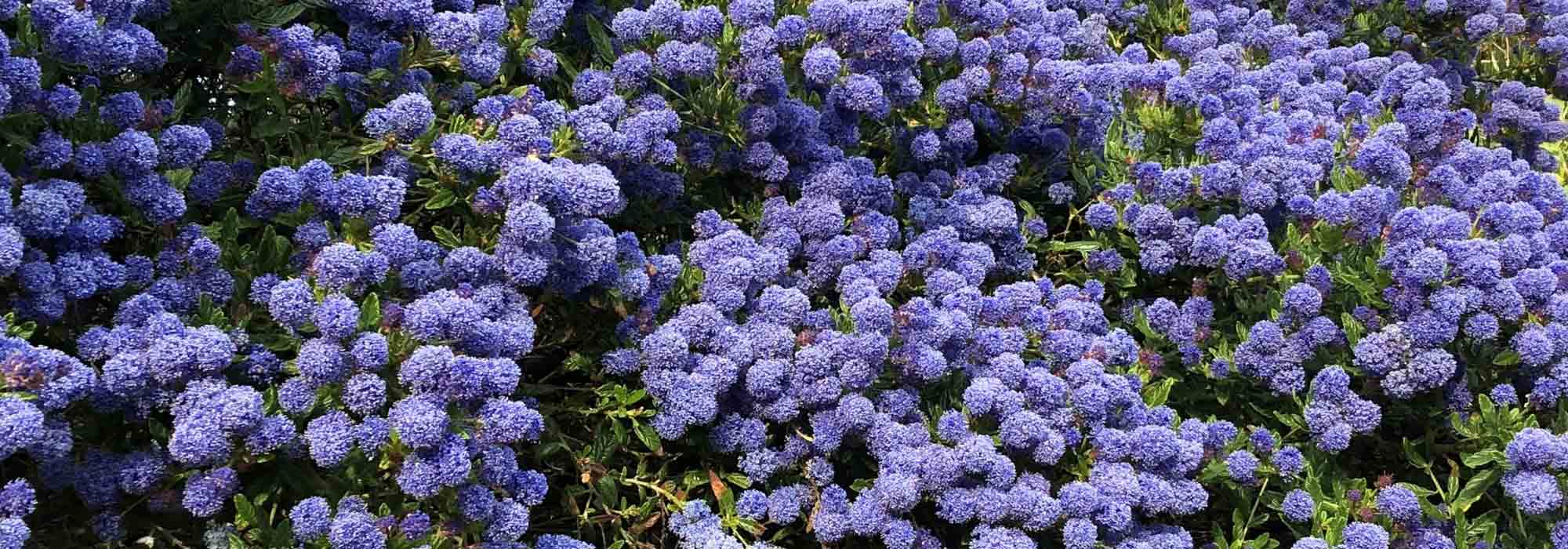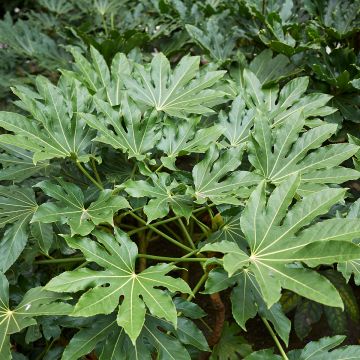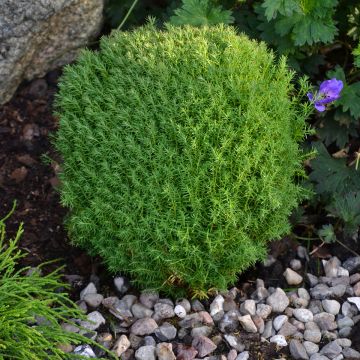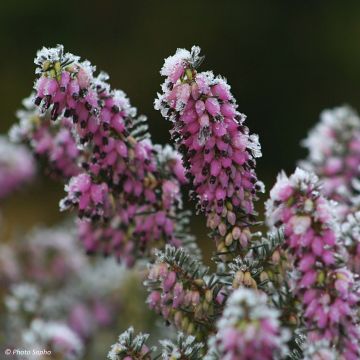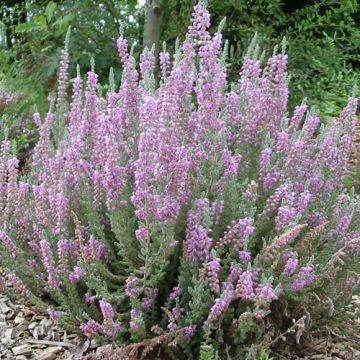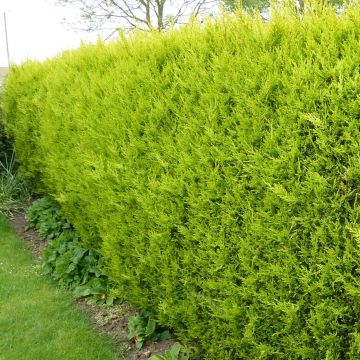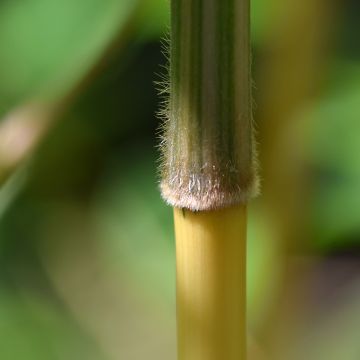

Ceanothus Blue Sapphire
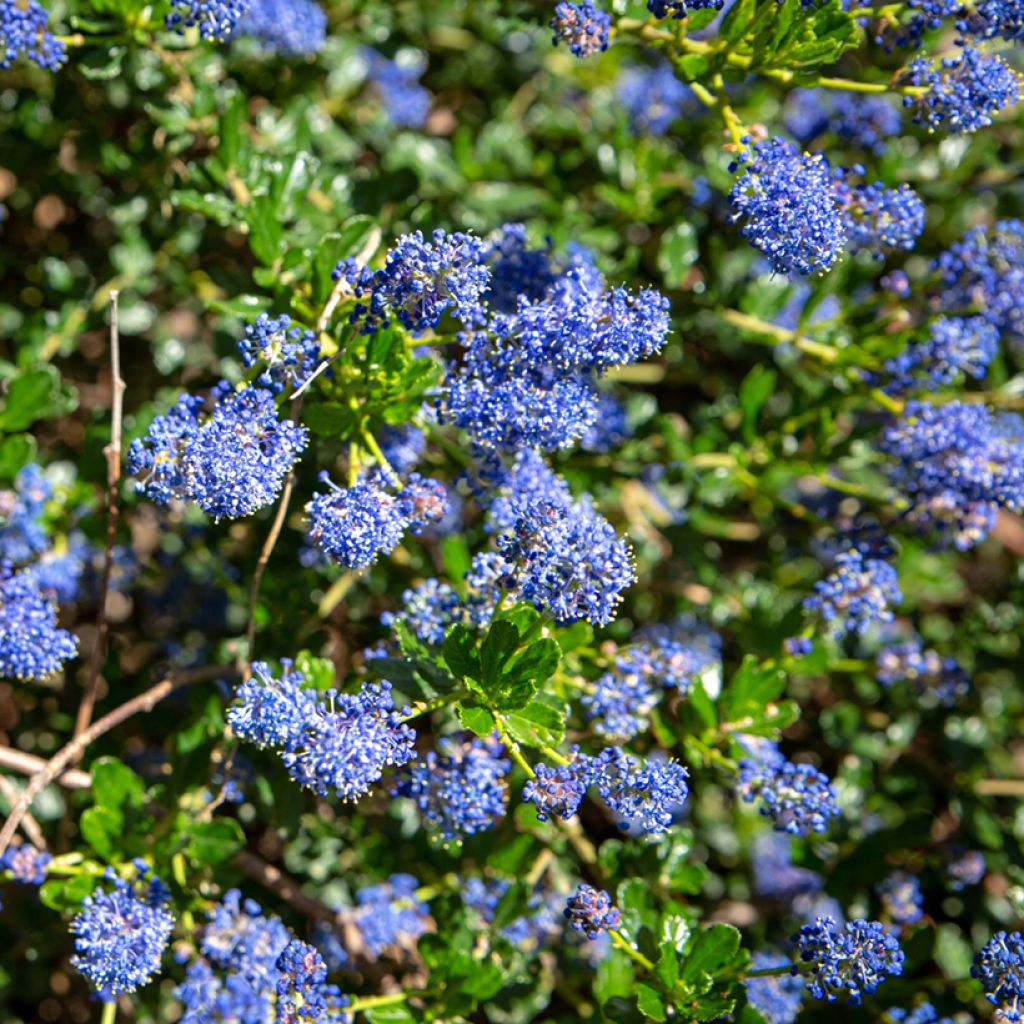

Ceanothus Blue Sapphire
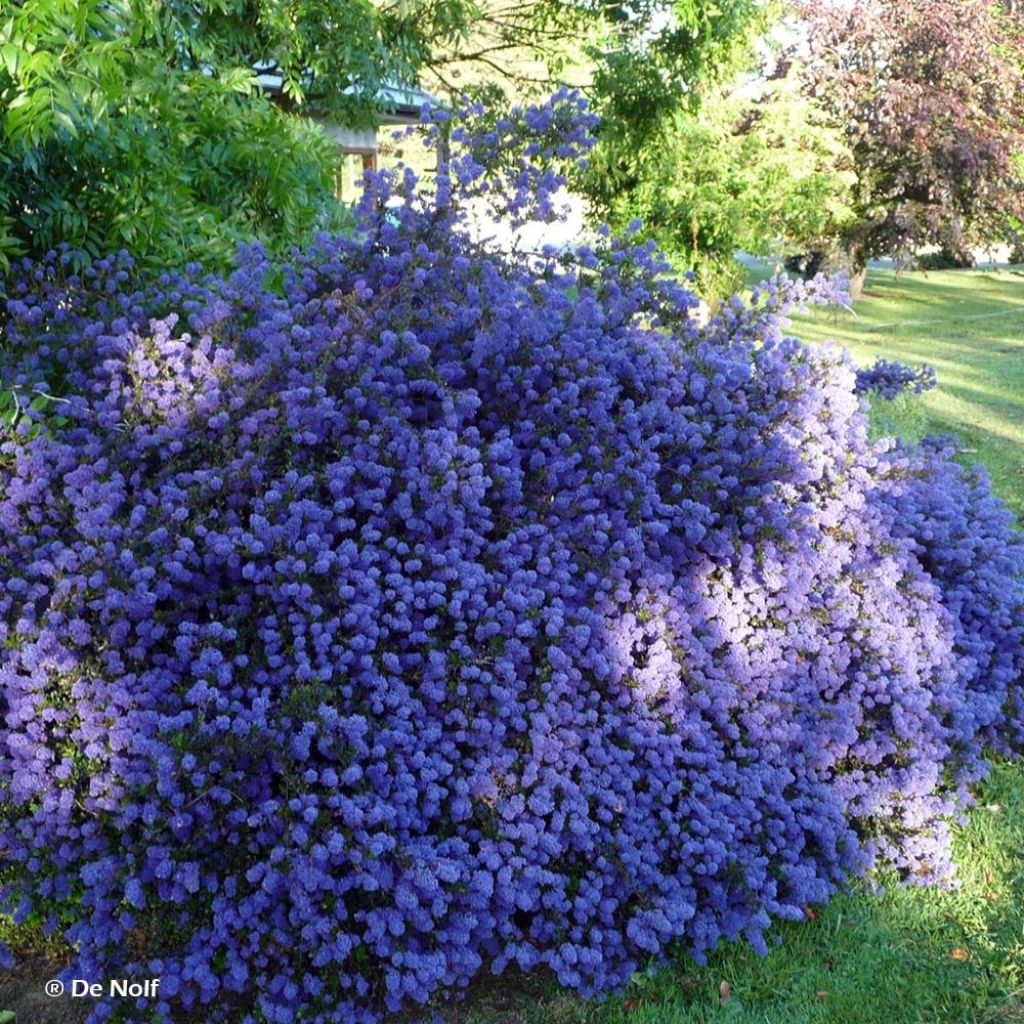

Ceanothus Blue Sapphire
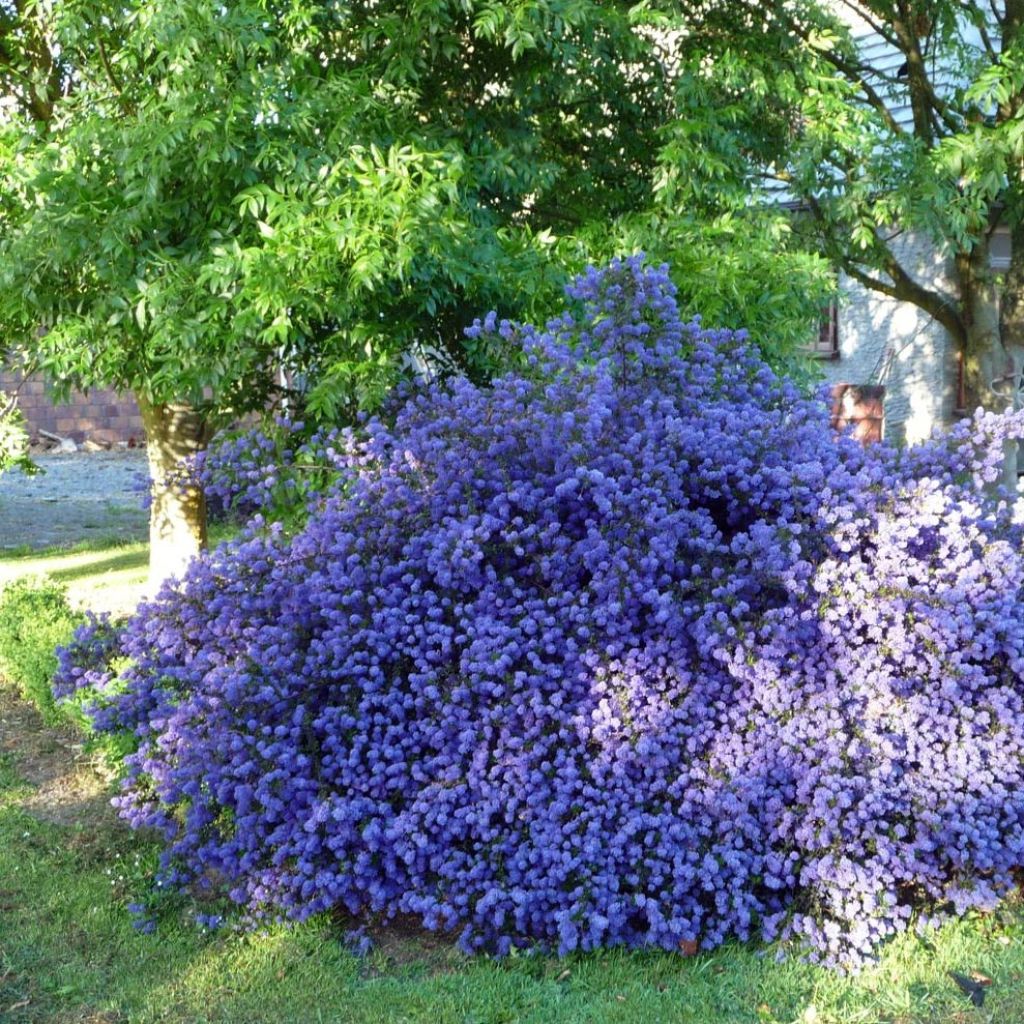

Ceanothus Blue Sapphire
Ceanothus Blue Sapphire
Ceanothus thyrsiflorus var. repens Blue Sapphire
California Lilac, Carmel Ceanothus
Dense foliage of tiny, almost black, shiny leaves. A very beautiful young plant that I can't wait to see in flower!
Charlyne , 29/10/2025
Special offer!
Receive a €20 voucher for any order over €90 (excluding delivery costs, credit notes, and plastic-free options)!
1- Add your favorite plants to your cart.
2- Once you have reached €90, confirm your order (you can even choose the delivery date!).
3- As soon as your order is shipped, you will receive an email containing your voucher code, valid for 3 months (90 days).
Your voucher is unique and can only be used once, for any order with a minimum value of €20, excluding delivery costs.
Can be combined with other current offers, non-divisible and non-refundable.
Home or relay delivery (depending on size and destination)
Schedule delivery date,
and select date in basket
This plant carries a 24 months recovery warranty
More information
We guarantee the quality of our plants for a full growing cycle, and will replace at our expense any plant that fails to recover under normal climatic and planting conditions.

Would this plant suit my garden?
Set up your Plantfit profile →
Description
Ceanothus 'Blue Sapphire' is exceptionally beautiful with its fine, toothed foliage in a dark deep purple-green colour and its long flowering in small clusters of intense sapphire blue. Its bushy habit and creeping character make it a perfect plant for low hedges, borders and containers, as well as ground cover on a slope or to spread along a wall. It withstands poor soils, drought, and sea spray so this ceanothus thrives in coastal and urban gardens, provided it is given a warm and sunny position, without excess limestone and excess water. Reserved for regions with a mild climate or well-sheltered locations, trained against a south-facing wall.
Ceanothus belongs to the Rhamnaceae family, it is a cousin of our buckthorn (Rhamnus cathartica) and grows in dry, well-drained environments such as scrub vegetation, relying on rainfall once well-rooted. Constantly damp soil or too frequent watering, once the plant is established, will generally result in its demise. Native to North America and Mexico, its relative Ceanothus thyrsiflorus var. repens, also known as creeping ceanothus, forms a 3m (10ft) wide and 1m (3.28ft) tall bush which is hardy down to -10°C (14°F), with a bushy and spreading habit, and angular branches. It bears alternate, evergreen, glossy green, leaves with highly pronounced veins.
The creeping 'Blue Sapphire' ceanothus is a fast-growing bush reaching 1m (3ft) in height and 1.50m (5ft) in width when mature. It is a relatively short-lived bush, living no more than ten years. Its extremely rare coloured, intensely sapphire blue flowers appear from April to July in the form of 5 to 8cm (2 to 3.1in) panicles, in the axils and at the tips of the branches followed by the formation of seeds which are explosively released. This variety tolerates very light pruning of faded flowers and obstructive branches.
Because of an ongoing love for blue blooms, breeders have 'invented' beautiful ceanothus varieties in recent years, which are easier to acclimatize and have more modest dimensions, suitable for our gardens and terraces. The 'Blue Sapphire' Ceanothus is a beautiful subject to plant in a mass of easy-to-grow shrubs: the Buddleia officinalis (pale pink, from February), the Fremontodendron californicum (in April-May-June), the coronillas (in April), shrubby rockroses (Cistus laurifolius, in May), as well as junipers and strawberry trees. The golden foliage of the Choisya ternata 'Goldfinger' and the yellow blooms of St. John's Wort will contrast beautifully with its intense blue flowers. In a wild-style garden, consider associating it with the looser habits of Spanish brooms, silvery elaeagnus, rosemary, and pampas grasses, as well as the spiky silhouettes of yuccas.
Ceanothus Blue Sapphire in pictures
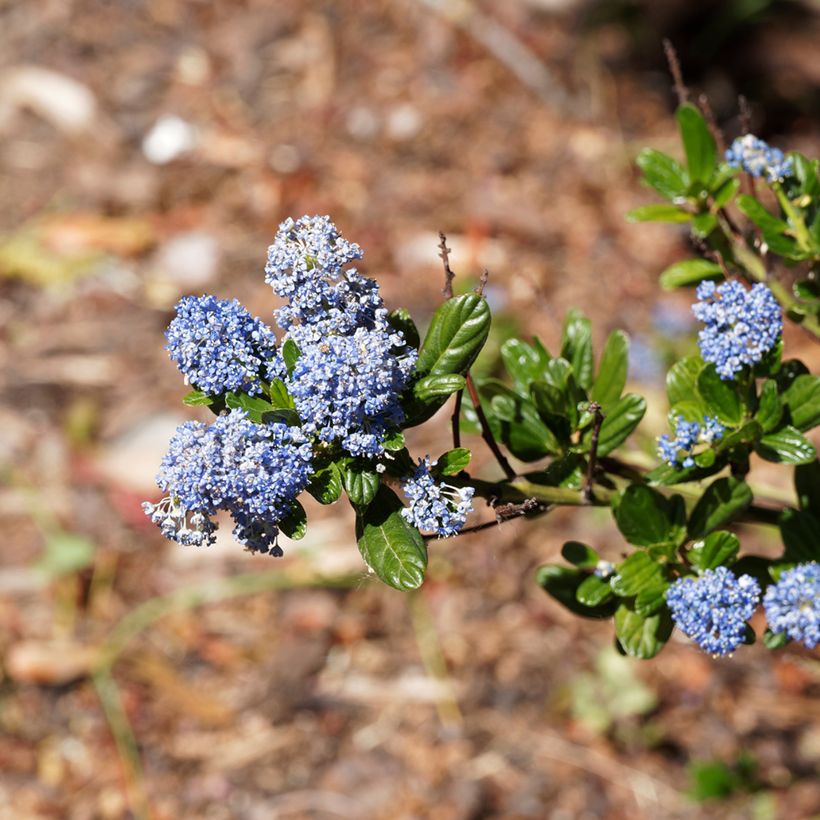

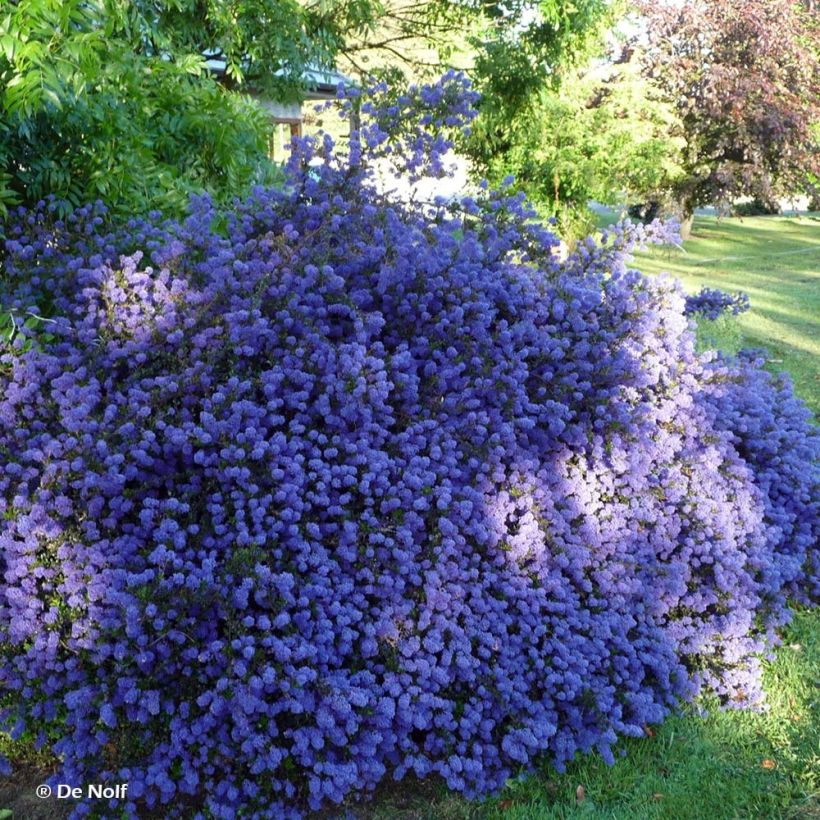

Plant habit
Flowering
Foliage
Botanical data
Ceanothus
thyrsiflorus var. repens
Blue Sapphire
Rhamnaceae
California Lilac, Carmel Ceanothus
Cultivar or hybrid
Planting and care
Place Ceanothus in a sunny or partially shaded position (in a warm region), in ordinary soil that must be moist to dry in summer and well-drained. This variety can withstand brief frosts of around -10°C once mature. It tolerates heavy soils very well if they are dry in summer. Be cautious of cold drafts which the bush does not like, it can be placed near a wall.
Plant it all year round if frost-free, mixing your garden soil with compost, coarse sand, gravel, perlite, or any material that does not retain moisture. Water generously once or twice a week to promote establishment. In hot and dry climates, planting in early autumn is preferable. Only water twice a month from the third year onwards, and only in case of summer drought. This is a plant that requires very little maintenance and grows easily as long as the required conditions are met. Moisture in the soil during the winter period, as well as in summer, is harmful to the plant. The combination of heat and humidity leads to the development of a fungus that attacks the bush's collar and is fatal. Therefore, in affected soils, it is better to plant the Ceanothus on a mound. You can lightly prune the stems after flowering to encourage the plant to branch out. Fertilizer application is not recommended (just add a little bonemeal at the bottom of the planting hole).
Pot cultivation:
Use a lightweight potting mix, a mix of garden soil, coarse sand, and compost. In summer, water abundantly but only when the soil is dry. The plant can be stored in a cool and bright place, with little or no heating, protected from severe frosts over winter. Apply a slow-release fertilizer in spring and autumn.
Planting period
Intended location
Care
Planting & care advice
-
, onOrder confirmed
Reply from on Promesse de fleurs
Similar products
Haven't found what you were looking for?
Hardiness is the lowest winter temperature a plant can endure without suffering serious damage or even dying. However, hardiness is affected by location (a sheltered area, such as a patio), protection (winter cover) and soil type (hardiness is improved by well-drained soil).

Photo Sharing Terms & Conditions
In order to encourage gardeners to interact and share their experiences, Promesse de fleurs offers various media enabling content to be uploaded onto its Site - in particular via the ‘Photo sharing’ module.
The User agrees to refrain from:
- Posting any content that is illegal, prejudicial, insulting, racist, inciteful to hatred, revisionist, contrary to public decency, that infringes on privacy or on the privacy rights of third parties, in particular the publicity rights of persons and goods, intellectual property rights, or the right to privacy.
- Submitting content on behalf of a third party;
- Impersonate the identity of a third party and/or publish any personal information about a third party;
In general, the User undertakes to refrain from any unethical behaviour.
All Content (in particular text, comments, files, images, photos, videos, creative works, etc.), which may be subject to property or intellectual property rights, image or other private rights, shall remain the property of the User, subject to the limited rights granted by the terms of the licence granted by Promesse de fleurs as stated below. Users are at liberty to publish or not to publish such Content on the Site, notably via the ‘Photo Sharing’ facility, and accept that this Content shall be made public and freely accessible, notably on the Internet.
Users further acknowledge, undertake to have ,and guarantee that they hold all necessary rights and permissions to publish such material on the Site, in particular with regard to the legislation in force pertaining to any privacy, property, intellectual property, image, or contractual rights, or rights of any other nature. By publishing such Content on the Site, Users acknowledge accepting full liability as publishers of the Content within the meaning of the law, and grant Promesse de fleurs, free of charge, an inclusive, worldwide licence for the said Content for the entire duration of its publication, including all reproduction, representation, up/downloading, displaying, performing, transmission, and storage rights.
Users also grant permission for their name to be linked to the Content and accept that this link may not always be made available.
By engaging in posting material, Users consent to their Content becoming automatically accessible on the Internet, in particular on other sites and/or blogs and/or web pages of the Promesse de fleurs site, including in particular social pages and the Promesse de fleurs catalogue.
Users may secure the removal of entrusted content free of charge by issuing a simple request via our contact form.
The flowering period indicated on our website applies to countries and regions located in USDA zone 8 (France, the United Kingdom, Ireland, the Netherlands, etc.)
It will vary according to where you live:
- In zones 9 to 10 (Italy, Spain, Greece, etc.), flowering will occur about 2 to 4 weeks earlier.
- In zones 6 to 7 (Germany, Poland, Slovenia, and lower mountainous regions), flowering will be delayed by 2 to 3 weeks.
- In zone 5 (Central Europe, Scandinavia), blooming will be delayed by 3 to 5 weeks.
In temperate climates, pruning of spring-flowering shrubs (forsythia, spireas, etc.) should be done just after flowering.
Pruning of summer-flowering shrubs (Indian Lilac, Perovskia, etc.) can be done in winter or spring.
In cold regions as well as with frost-sensitive plants, avoid pruning too early when severe frosts may still occur.
The planting period indicated on our website applies to countries and regions located in USDA zone 8 (France, United Kingdom, Ireland, Netherlands).
It will vary according to where you live:
- In Mediterranean zones (Marseille, Madrid, Milan, etc.), autumn and winter are the best planting periods.
- In continental zones (Strasbourg, Munich, Vienna, etc.), delay planting by 2 to 3 weeks in spring and bring it forward by 2 to 4 weeks in autumn.
- In mountainous regions (the Alps, Pyrenees, Carpathians, etc.), it is best to plant in late spring (May-June) or late summer (August-September).
The harvesting period indicated on our website applies to countries and regions in USDA zone 8 (France, England, Ireland, the Netherlands).
In colder areas (Scandinavia, Poland, Austria...) fruit and vegetable harvests are likely to be delayed by 3-4 weeks.
In warmer areas (Italy, Spain, Greece, etc.), harvesting will probably take place earlier, depending on weather conditions.
The sowing periods indicated on our website apply to countries and regions within USDA Zone 8 (France, UK, Ireland, Netherlands).
In colder areas (Scandinavia, Poland, Austria...), delay any outdoor sowing by 3-4 weeks, or sow under glass.
In warmer climes (Italy, Spain, Greece, etc.), bring outdoor sowing forward by a few weeks.






























